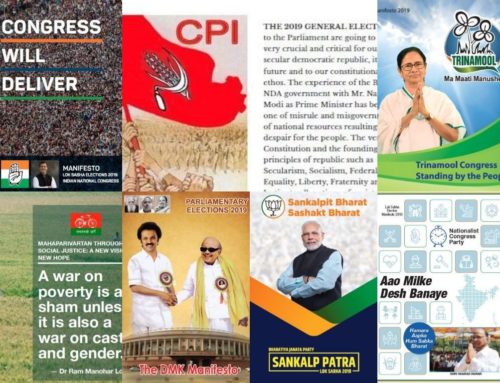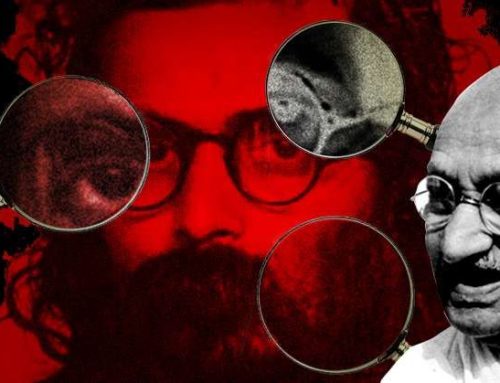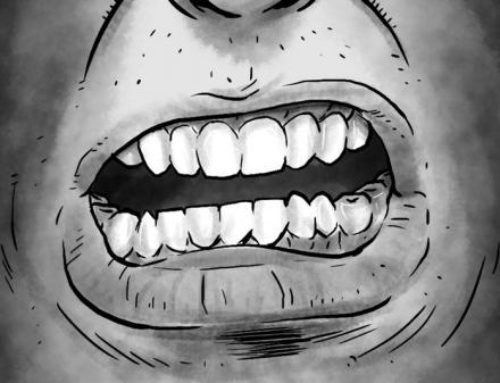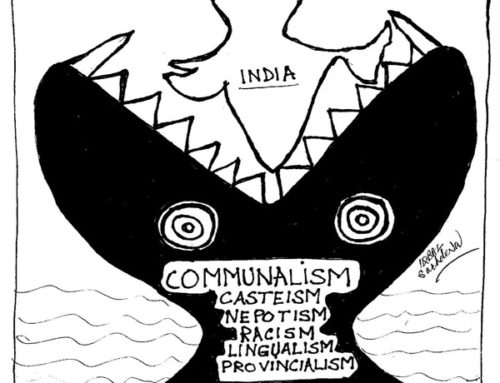Jallikattu- A cultural ideal we desire?
Neha Dabhade
(Secular Perspective February 1-15, 2017)
Hundreds of thousands of protestors poured out on Marina beach in Chennai in January to protest against the ban on Jallikattu in Tamil Nadu. There was sloganeering against the political establishment at the Centre and the state. The media reported that the protestors were mainly youth, college going students and intellectuals making it ‘people’s movement’ (Janardhanan, 2017). Various issues were raised, all viewed as hurting Tamil pride and culture. But Jallikattu remained at the core of the protests. The state witnessed such massive ‘spontaneous’ unprecedented protests. The implications of this reaction must be discerned more comprehensively.
There is a lot written about Jallikattu from two different perspectives. One is about the cruelty meted out to the bulls involved and how it can’t be ethical normative precedent for our society. Other argument is how Jallikattu is part of Tamil tradition and now of Tamil identity and pride. While both arguments are built on a number of facts, arguments and counter arguments, it is important to dwell deeper into the sport, the ban and the subsequent ordinance by BJP government at the Centre to analyze these issues beyond the pivot points of animal cruelty or traditions/ culture. Jallikattu is also a signifier of the culture we want in our society. Do we want a culture steeped in violent and masculine ideas of entertainment at the cost of mute, helpless, tortured animals or a peaceful inclusive society based on the values of compassion and equality? This is the framework this article wants to adopt while examining the issue of Jallikattu and the related politics.
Jallikattu is a sport where a bull is let loose and the males compete to hold on to the hump of the bull and go a particular distance. The winner gets a bag of money attached to the hump of the bull. In order to make the sport exciting and giving it heroic proportions, the bull are infuriated and made more aggressive by prodding them with sharp objects like spears, bitten, tails mutilated, bitten or twisted, chilli powder put in their eyes, the bulls are dragged by the ropes in their nose which leads to bleeding and administered alcohol. This makes the bull agitated and dangerous adding more adrenaline factor and attaching the notion of male valor to it (The Wire, 2017). Looking at the gruesome treatment meted out to the bulls, the Supreme Court in 2014 had banned the sport along with other similar sports like rekla, kambala and manjuvirattu. But there have been persistent demands for continuing of the sport. The Central government issued an ordinance which allowed Jallikattu to be held albeit some restrictions. This was challenged in the Supreme Court by animal activists and the Supreme Court stayed the notification. This led the Tamil Nadu State Assembly to pass amendments in the Prevention of Cruelty Act of 1960 to allow Jallikattu. Emboldened by the protests against the ban and the Centre government giving into it, there are similar demands from other states like Maharashtra and Karnataka to legalise bullock cart races and kambala. Arguments for Jallikattu range from how it contributes to protecting native breeds from extinction to how it is central to Tamil identity!
At the outset the issue is significant in the way how the State and the Central governments have undermined the rulings of the Supreme Court by passing subsequent ordinances. In order to please the populist demand, the governments have breached the principle of separation of judiciary, executive and legislature. What the judiciary struck down based on constitutional reasoning, the executive and the legislature sought to undo. This is an alarming precedent. In the future, similar ordinances can be passed to give legitimacy to other harmful practices in the society which violate fundamental rights of citizens and constitutional values. Untouchability is still practiced in all parts of India. So are honor killings. These issues evoke strong emotions and are argued to be part of culture. So by applying the same yard stick, will these also be made legal? It must not be forgotten that lives of many youth are lost in Jallikattu violating their right to life enshrined in the Constitution. The two lives lost in Jallikattu this year are not so widely written about in the media. Why are there no protests for their fundamental rights?
What is perhaps interesting is that the ban could mobilize so many youth on the marina beach. There are still debates if the youth gathered spontaneously or the Marina beach protest was engineered by political parties. Though Jallikattu was only symbolical and the ire of the crowd was directed at the political establishment for a range of issues including the perceived unfairness in the distribution of Cauvery water to Tamil Nadu. The general perception of marginalization and discrimination of the Tamils by the Centre snowballed in the massive mobilization. Yet it needs to be examined that why an issue of jallikattu and not employment or drought or floods which are more pressing issues did not become the rallying point for the youth or the masses. How jallikattu assumes such centrality in Tamil identity and the implications of such demands and protests must be analyzed.
Its important at this juncture to look at the character of Tamil Nadu and the influences that have shaped the dominant culture of the state. While Jallikattu is often touted as the only tradition indigenous to Tamil culture, what is invisibilized is the contribution of Bhakti movement to the cultural ethos in South India where the Bhakti movement actually started. The philosophy of stalwarts like Basavanna and Alvars/ Nayanars holds prominence in the literature and culture of the region of South India. Alvars were saints devoted to Lord Vishnu and Nayanars were devotees of Shiva. They gave a clear message of selfless devotion and compassion. Their contribution to the Bhakti movement is immense. Bhakti movement was a movement against tradition and rituals which started in South India and spread all over India. It laid emphasis on single minded devotion to God. The most significant aspect of the movement however was the values it sought to spread. These values were love, compassion and equality primarily. The Bhakti saints were against the Brahminical order that reigned supreme in the then society. Brahminical order prevalent was characterized by rituals, ceremonies and blind faith. The Bhakti saints on the other hand countered these practices with a narrative of humaneness, rationale thinking and message of selfless surrender to God. The essence of the movement is shedding of all identities of caste, gender, class, region etc. The message was of simplicity and surrender to God.
As opposed to these messages which have left an indelible mark on the cultural map on India, Jallikattu stands for a virulent underlying belief that spilling of blood on the land will bring prosperity. The philosophy of Jallikattu is based on the idea of control and supremacy over animal and other human beings. Instead of respecting the age old ethos of living in harmony with nature and submitting oneself to the Divine with others on the earth, such sports promote hierarchy and bloodletting where animals are degraded for vested interests. While the messages of the Bhakti saints resonate in Tamil Nadu through generations which reflect in a strong movement against caste, Jallikattu takes place in merely 20 villages in southern districts in Tamil Nadu. This deflates the claims of Jallikattu being an integral part of Tamil culture. There are many facets to Tamil culture, most of which are inclusive and humane. Jallikattu is wrongly selectively portrayed as being the dominant one.
At the risk of repetition of the obvious point, I would like to point out at the masculine and patriarchal nature of Jallikattu. The idea of Jallikattu is entrenched in violent masculinity. Earlier the winners of Jallikattu were honored by bull owners by marrying off the daughters of bull owners to the victors. Women have very little to do with the sport than to rear the bulls. In this sport both, the women and the bulls are objectified- bulls become objects to be tamed and subdued and women become objects to be given away as prizes, in effect taking away agency from both and placing them at the subservient position to men in a patriarchal tradition. This notion of masculinity which is not inclusive of nature around and propels a violent culture is against the very values that form the basis for the movements against caste, equality, liberty. Gandhi’s idea of society in harmony with nature or Periyar’s struggle against caste are incompatible with such hyper macho practices which hold so much sway over the youth and create a dominant discourse in the society to be emulated.
Not only is Jallikattu symbolic of patriarchy prevalent in our society but also symbolic of a caste ridden society. A strong voice of protest has emerged from the Dalit community in Tamil Nadu which points out that Jallikattu has a caste character and is a vestige of caste divided society. Jallikattu still takes place in districts where caste Hindus are dominant. Dalit youth who attempt to participate in the sport are attacked (Yamunan, 2017). If the bull is tamed by Dalits it leads to clashes. Even as spectators they have to stand only in the earmarked area and are forbidden to share the same space with other caste Hindus (Indian Express, 2017). How can Jallikattu become the mascot of Tamil identity when a large section of the Tamil society has been excluded from the practice and is penalized for their participation? The Dalits view Jallikattu as one of the instruments to reinforce the already deeply entrenched caste hegemonies by claiming it to be part of Tamil culture.
While the emotions of the masses ran high in the protests, the positions taken by the political establishment is quite ironical. The Central government passed an ordinance to allow Jallikattu to continue (discussed above). This is not in keeping with BJP’s stand on beef. Ironically the Hindu nationalists see Jallikattu as Hindu practice and its ban as interference with Hindu religion and culture (Indian Express, 2016). It doesn’t come as a surprise considering that they feel Sati and caste system also are part of Hindu culture. But what is incongruent is that BJP treats bovines as sacred and thus brings about ban on slaughter of bulls in states like Maharashtra, Gujarat, Madhya Pradesh and Haryana. The cow has become an icon of Hindutva politics. Gau Rakhshaks like in Una beat up Dalits for skinning dead bovine. Innocent persons are lynched to death merely on the suspicion that they store beef at home. Bovines are revered to that extend. But such rampant cruelty to bulls is not objected to, in fact any attempt to stop it is taken as an interference on Hindu culture. This can be explained by the electoral interests that BJP nurtures in Tamil Nadu. For sake of populism which it hopes will get it electoral success, BJP has abandoned its “concern” for the bovines which otherwise forms a backbone of its idea of India and nationalism. Communities that depend on bovines for livelihood and food are vilified and stigmatized as anti national since cows are sacrosanct. However it sees no problem with unspeakable cruelty to bulls for entertainment and merriment. This amounts to selective protection to bovine for its own vested interests and shows its insincerity to ‘cause’ which has become a litmus test of nationalism for the whole country.
Jallikattu has come to represent brute majoritarianism where regardless about the ethics of the matter there are persistent demands for populist measures. The serious ramification of the issue was how the Supreme Court’s judgment was systematically undermined. Jallikattu is a merely a symbol. Through demands in favour of Jallikattu, a kind of atavistic, violent and brutal culture where fellow living beings are treated with cruelty for entertainment and reinforcing supremacy over other human beings is being promoted. Notwithstanding its casteist and misogynist overtones, the State is bending over backwards to appease the “Tamil pride’ for electoral gains by selectively taking a stand on bovines. The pride of any culture or group must be its emphasis and faith in compassion and equality it can extend to fellow living beings. Our society has given us more humane framework and ideals that can be celebrated and highlighted. Can all practices be claimed as part of culture? And doesn’t culture evolve or is it static? Why can’t we choose a more humane culture? These issues should be debated and discussed in a democratic way.
—————————————————
Centre for Study of Society and Secularism
www.csss-isla.com






